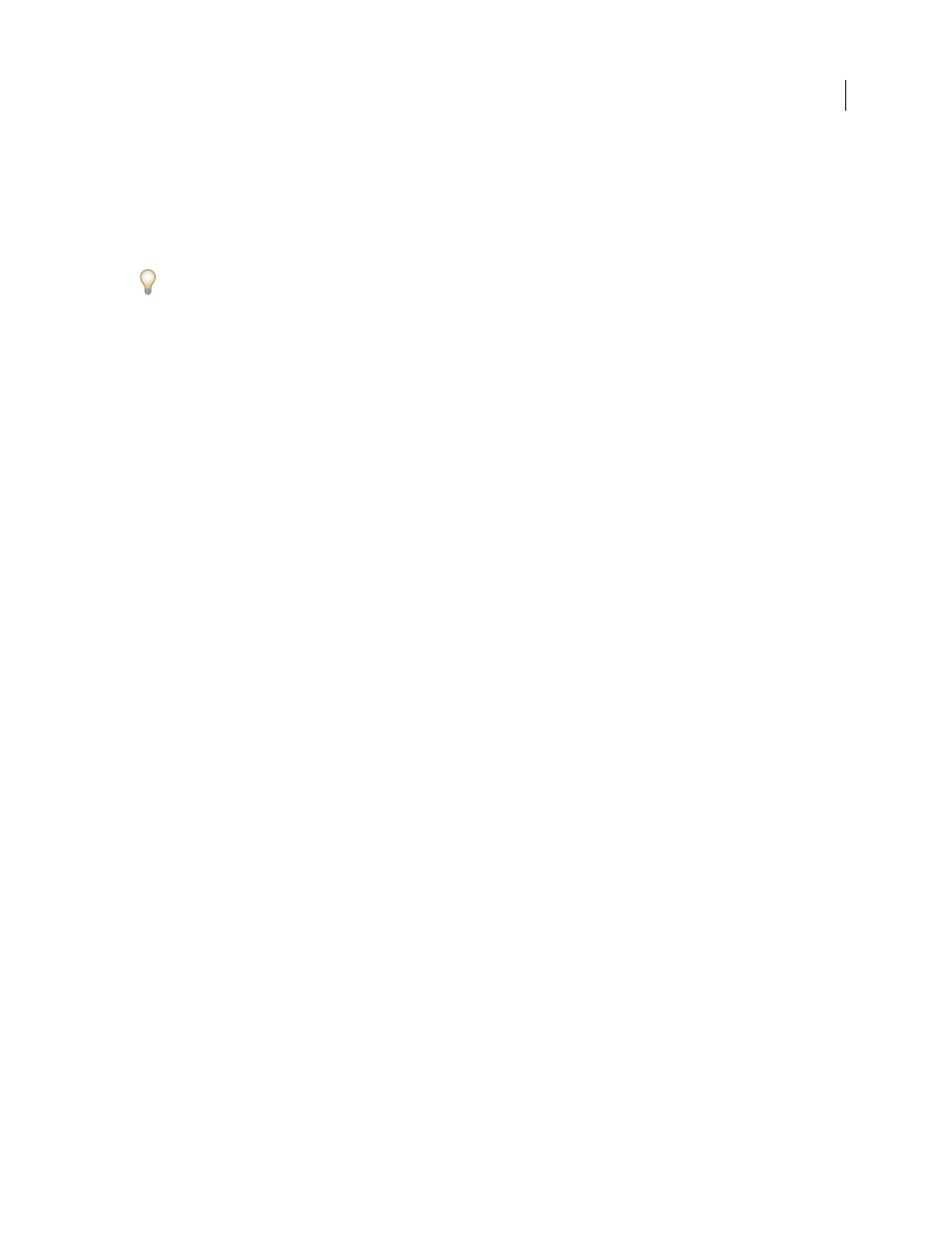Adobe Illustrator CS3 User Manual
Page 411

ILLUSTRATOR CS3
User Guide
405
•
To overprint all black ink, select Overprint Black.
•
To change the screen frequency, screen angle, and shape of halftone dots for a plate, double-click the ink name.
Alternatively, click the existing setting in the Document Ink Options list, and make the desired changes. Note
however, that the default angles and frequencies are determined by the selected PPD file. Check with your print
shop for the preferred frequency and angle before creating your own halftone screens.
If your art contains more than one spot color, particularly interactions between two or more spot colors, assign
different screen angles to each spot color.
7
Set additional options in the Print dialog box.
In particular, you can specify how to position, scale, and crop the artwork; set up printer’s marks and a bleed; and
choose flattening settings for transparent artwork.
8
Click Print.
See also
“Printer resolution and screen frequency” on page 402
“Print an object on all plates” on page 406
“Print dialog box options” on page 402
Color separation modes
Illustrator supports two common PostScript workflows, or modes, for creating color separations. The main
difference between the two is where separations are created—at the host computer (the system using Illustrator and
the printer driver), or at the output device’s RIP (raster image processor).
In the traditional host-based, preseparated workflow, Illustrator creates PostScript data for each of the separations
required for the document, and sends that information to the output device.
In the newer RIP-based workflow, a new generation of PostScript RIPs perform color separations, trapping, and even
color management at the RIP, leaving the host computer free to perform other tasks. This approach takes less time
for Illustrator to generate the file, and minimizes the amount of data transmitted for any given print job. For example,
instead of sending PostScript information for four or more pages to print host-based color separations, Illustrator
sends the PostScript information for a single composite PostScript file for processing in the RIP.
Emulsion and image exposure
Emulsion refers to the photosensitive layer on a piece of film or paper. Up (Right Reading) means that type in the
image is readable (that is, “right reading”) when the photosensitive layer is facing you. Down (Right Reading) means
that type is readable when the photosensitive layer is facing away from you. Normally, images printed on paper are
printed Up (Right Reading), whereas images printed on film are usually printed Down (Right Reading). Check with
your print shop to determine which emulsion direction it prefers.
To tell whether you are looking at the emulsion side or the nonemulsion side (also referred to as the base), examine
the final film under bright light. One side appears shinier than the other. The dull side is the emulsion side; the shiny
side is the base.
Image exposure refers to whether artwork prints as a positive or negative image. Typically, print shops require
negative film in the United States and positive film in Europe and Japan. If you are unsure about which image type
to use, consult your print shop.